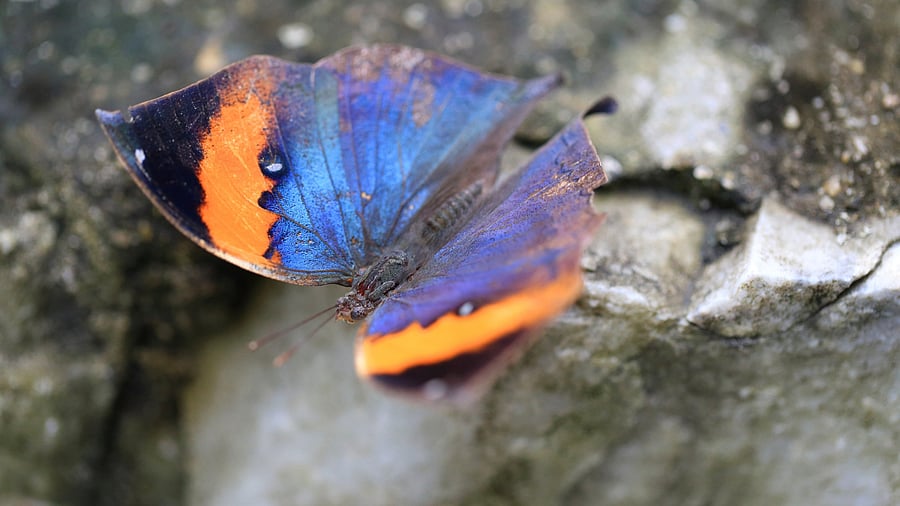
A recent study conducted by researchers at Bangalore University (BU) has identified the institution's campus as a significant urban biodiversity hotspot.
Credit: Special Arrangement
Bengaluru: A recent study conducted by researchers at Bangalore University (BU) has identified the institution's campus as a significant urban biodiversity hotspot, documenting a remarkable 105 butterfly species across five families and 64 genera.
Published in the Proceedings of the Zoological Society, the research focused on butterfly species' interactions with host and nectar plants, alongside the influence of environmental factors on their abundance and distribution.
The Nymphalidae (brush-footed butterflies) family dominated the butterfly population, comprising 33 per cent of the recorded species, with Acraea terpsicore (Tawny Coster) being the most abundant at 13.1 per cent.
Two species — Catopsilia pomona (Common Emigrant) and C pyranthe (Mottled Emigrant) — were observed throughout the year. By contrast, Parantica nilgiriensis (Nilgiri Tiger), a near-threatened species according to the International Union for Conservation of Nature (IUCN), was recorded only once.
Butterfly diversity at BU was found to be closely tied to the diversity and density of vegetation. The study identified 86 larval host plant species, primarily from the Fabaceae (Legumes) family, which was the most abundant and species-rich, contributing 24 host plant species. Cadaba fruticosa (Indian Cadaba or Maragacha in Kannada) attracted five different Pierid butterfly species.
Adult butterflies were observed feeding on 25 nectar plant species, with Ixora coccinea (Jungle Geranium) and Lantana camara (West Indian Lantana) being particularly popular. Notably, Lantana camara supported up to 38 different butterfly species, highlighting its central role in sustaining adult butterfly populations.
The study also analysed the effects of abiotic factors such as temperature, humidity, and rainfall on butterfly communities. A positive correlation was found between relative humidity and butterfly abundance, especially within the Nymphalidae family. However, higher temperatures and increased precipitation negatively impacted species richness and distribution, emphasising the sensitivity of butterfly communities to climate variables.
Prof MG Venkatesha, the corresponding author of the study, stated that planting larval host plants and adult nectar plants could enhance the city’s biodiversity. "If we plant native species that serve as larval hosts or nectar sources, butterflies are sure to follow. Butterflies cannot reproduce unless the females consume nectar from such plants, so it is essential to have them,” he explained.
Venkatesha also noted that attracting butterflies would, in turn, support other wildlife, such as birds, which are natural predators of butterflies.
The study’s lead author, S Rajashekara, conducted the research under the guidance of Venkatesha. Other researchers involved in the study were LK Eregowda, GS Manjunath, TK Manoranjini, and RD Prathibha.